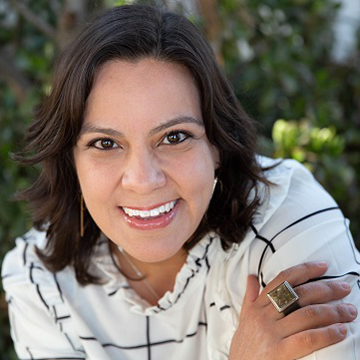Landscape Assessment of CTSA Evaluators Highlights Strengths, Opportunities
For evaluators in the Clinical and Translational Science Award (CTSA) consortium, the practice of evaluation creates opportunities to adapt, improve and respond. These findings were highlighted in a recent publication in the Journal of Clinical and Translational Science (JCTS) that details the impact of evaluators and their roles within the consortium.
This paper is a conscious effort to share CTSA consortium knowledge in evaluation and best practices, while simultaneously inviting wider community participation to engage in conversations surrounding evaluators’ work. Takeaways from the study provide evidenced-based recommendations for evaluation practice (at both, national and group-level) and prompt use by other large evaluation consortia.
Veronica Hoyo, PhD, Executive Director of the Network of the National Library of Medicine (NNLM) National Evaluation Center and longtime CTSA evaluator, explained that this paper highlights findings from the most recent iteration of a national, peer-led tradition of periodically surveying all CTSA evaluators to learn who they are, what competencies they all share, and how their work is used.

Evaluation is essential for informing the strategic management of large consortia as it provides the evidence for data-driven decision-making.”
The National CTSA Evaluators Survey was designed to provide a snapshot of CTSA consortium evaluators, their expertise, “best practices,” and cross-hub resource allocation. Since 2009, the Evaluators Survey subgroup within the larger Evaluators Working Group has operated to advance well-established survey activity and promote cross-hub evaluative collaborations.
“Evaluation is essential for informing the strategic management of large consortia as it provides the evidence for data-driven decision-making. The CTSA consortium has long understood the importance of having a highly trained, innovative, and driven evaluation workforce, in order to be able to more effectively and efficiently work towards achieving the mission of the CTSA Program: to get more treatments for all people as quickly as possible,” Hoyo says.
The JCTS paper serves as a natural extension of CTSA’s mission to accelerate the development of health interventions to provide increased resource allocation to patients.
“I think that the paper shows the remarkable stability in the CTSA consortium’s evaluation capacity throughout the years, despite external and structural factors such as the COVID-19 pandemic, changes to the consortium’s priorities, etc. As a group, the CTSA evaluators are highly productive (mostly measured in academic outputs), adaptable (well-versed in advanced methods fit-for-purpose to different research questions), and nimble (capable of shifting gears and responding to changes),” Hoyo continued.
Though challenges faced by evaluators vary, this landscape assessment affirms the importance of a culture of evaluation and continuous improvement and an “adapt, improve, respond” mindset to effectively and efficiently drive translation forward.
This work was supported, in part, through the following NIH National Center for Advancing Translational Science grants: UL1TR001422, UL1TR002378; UL1 TR002001; UL1 TR001450; UL1 TR001445; UL1TR001420; 1UM1TR004404-01; UM1 TR004538; UM1TR004402. The content is solely the responsibility of the authors and does not necessarily represent the official views of the National Institutes of Health.
Written by Alex Miranda




